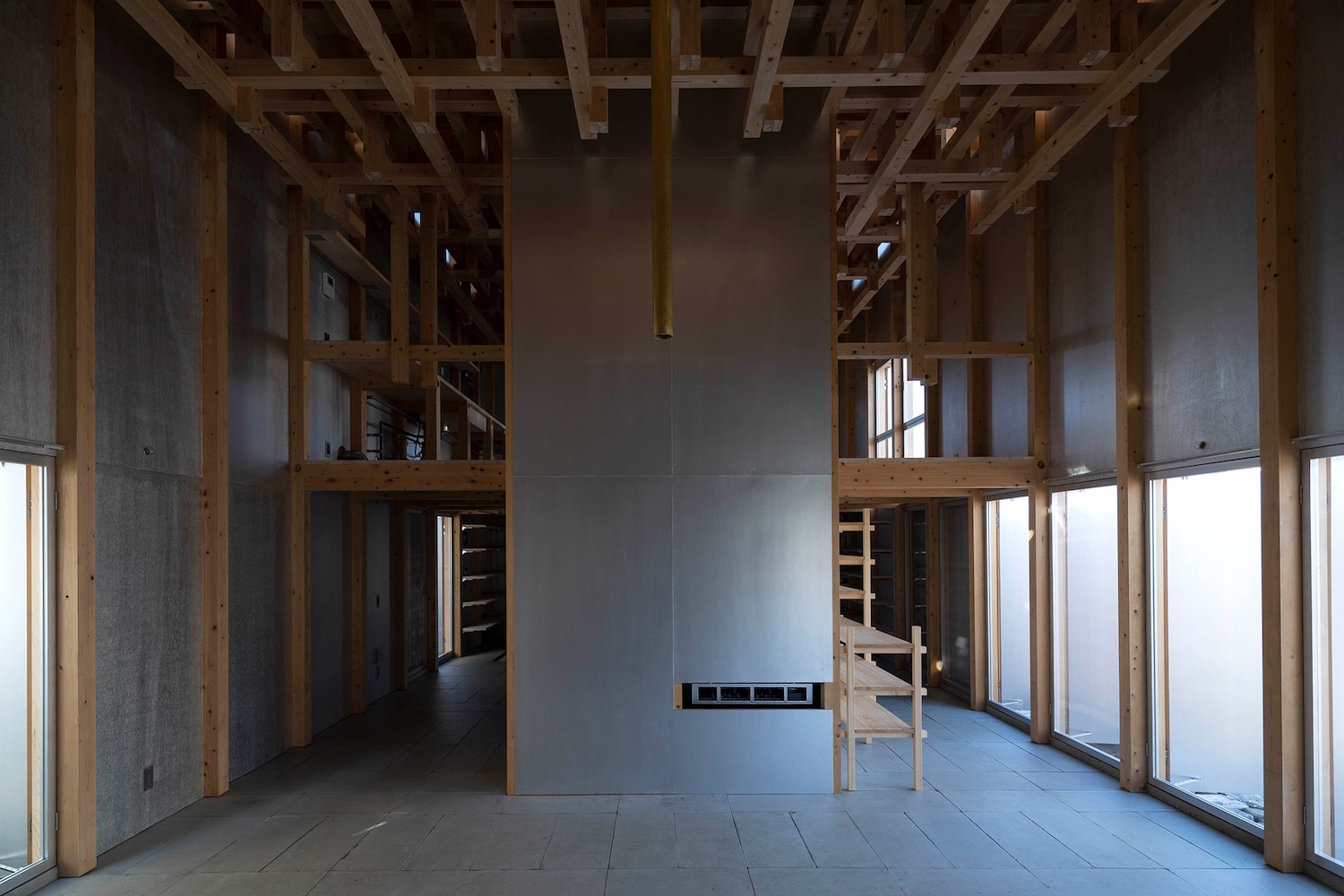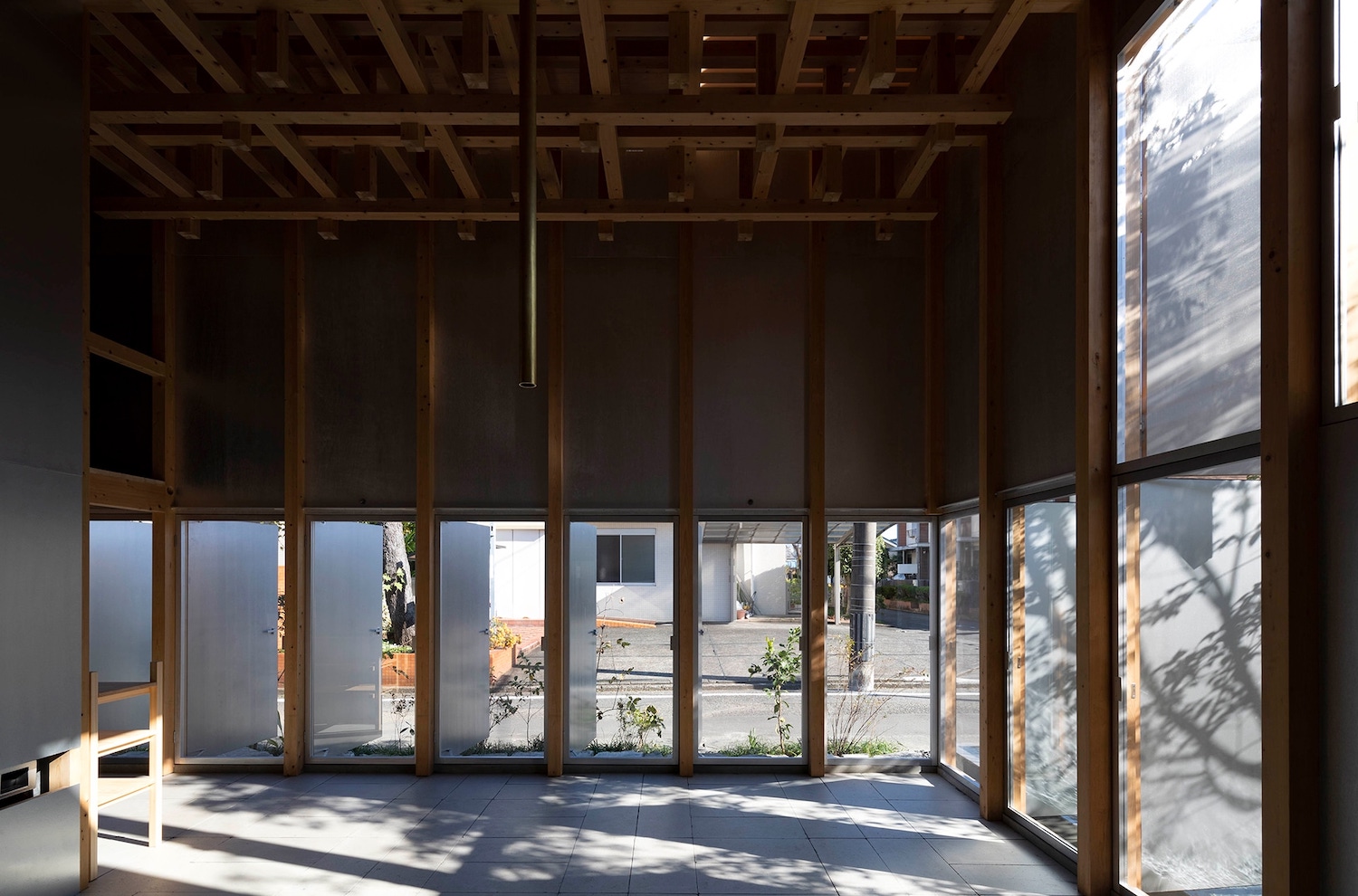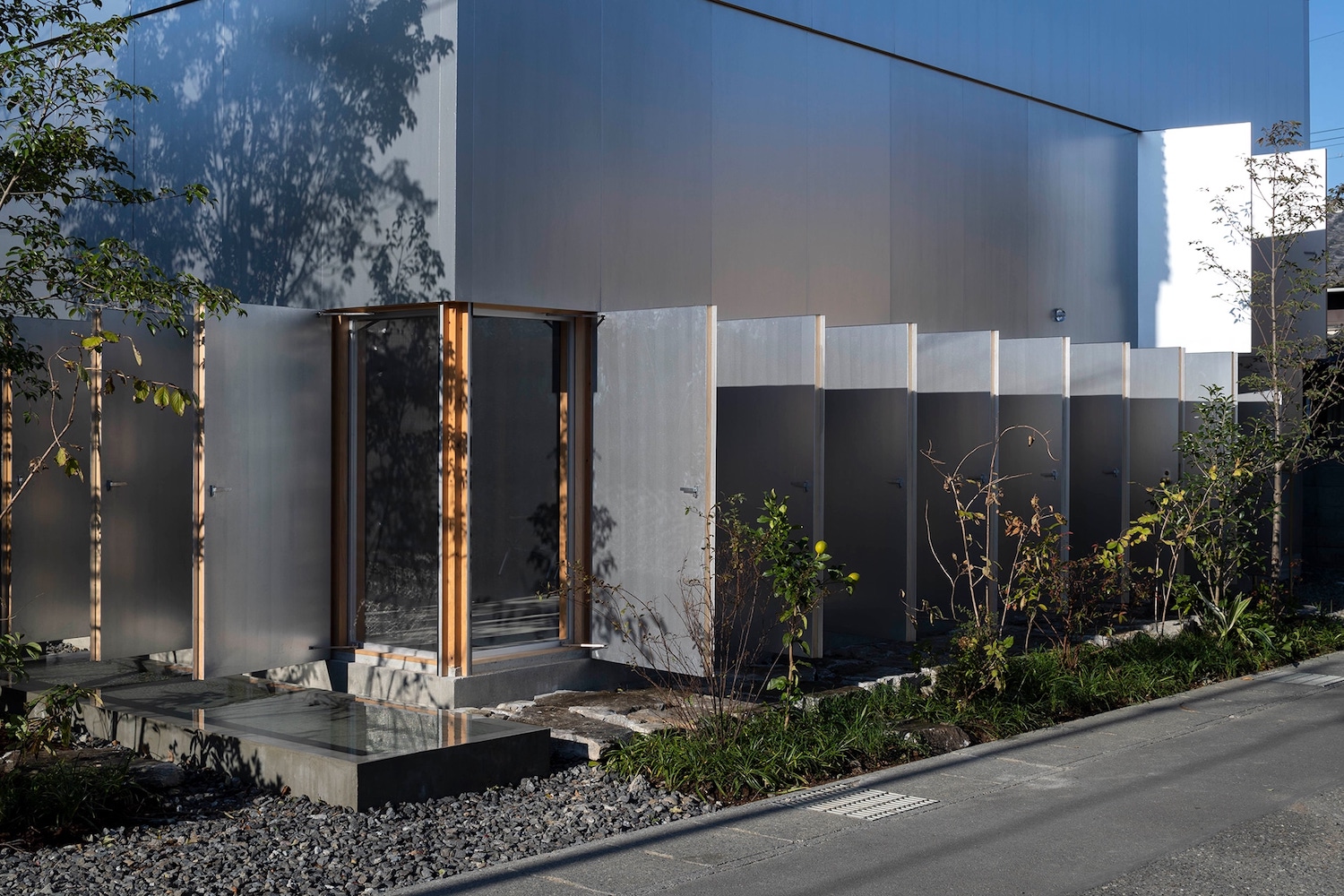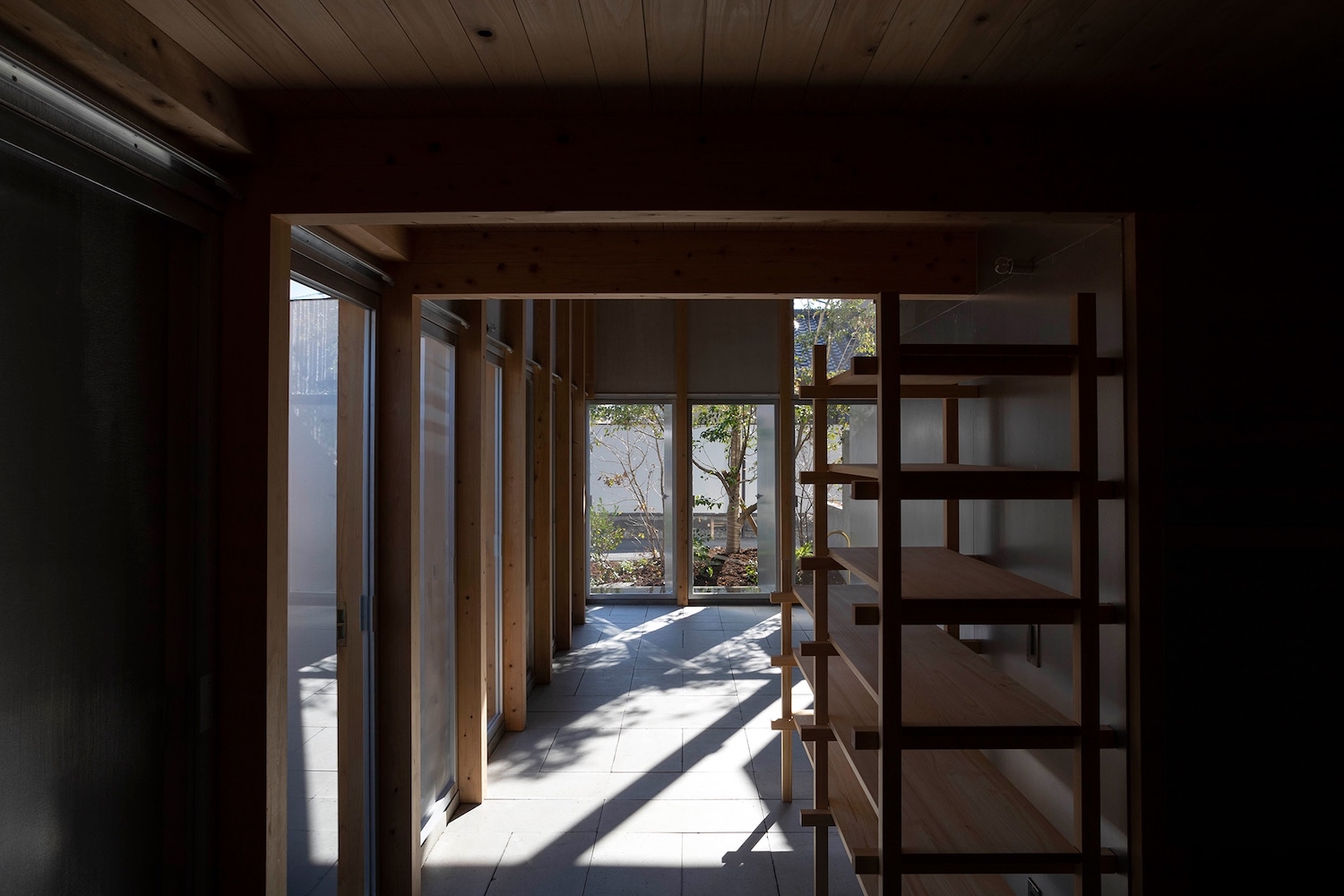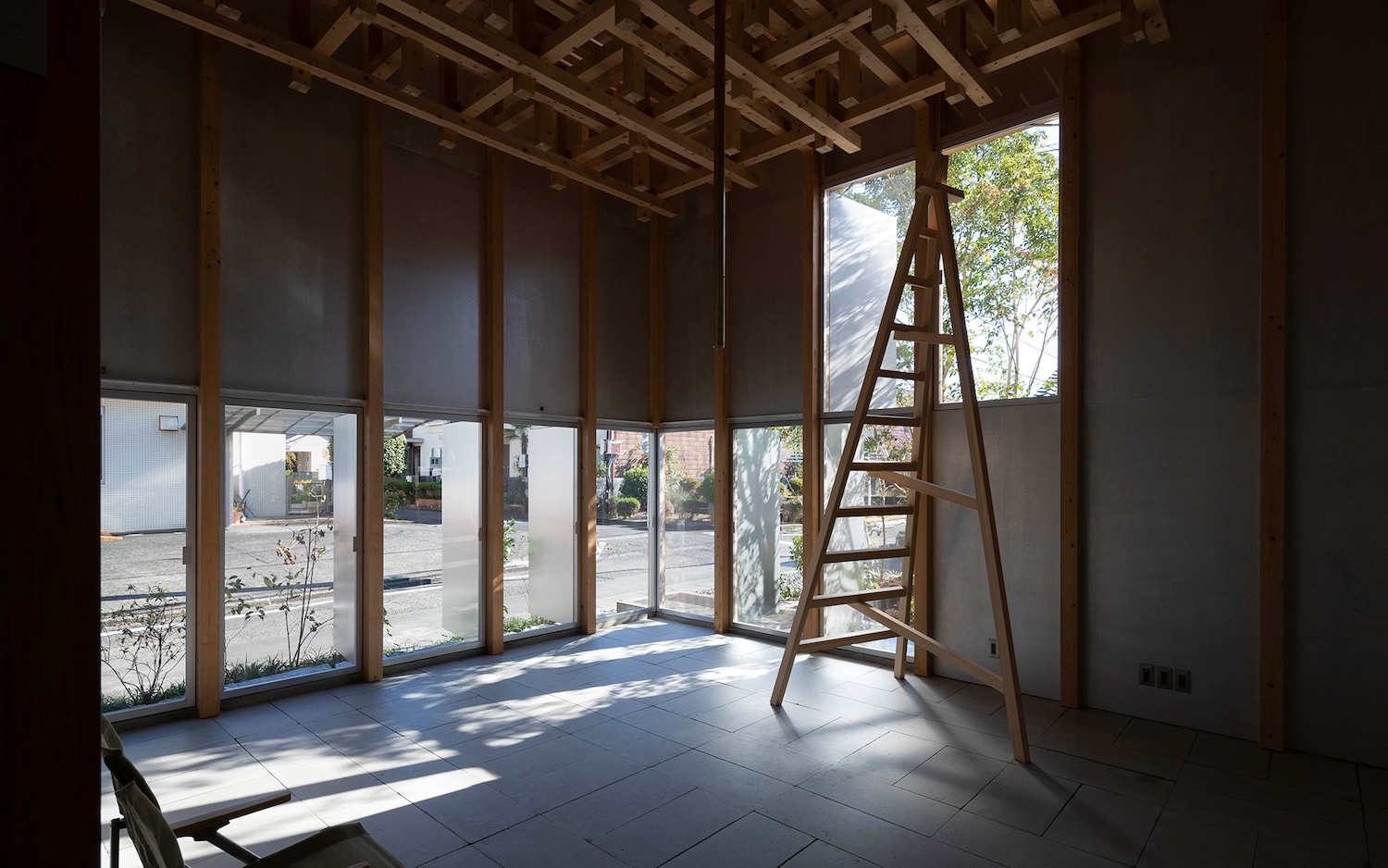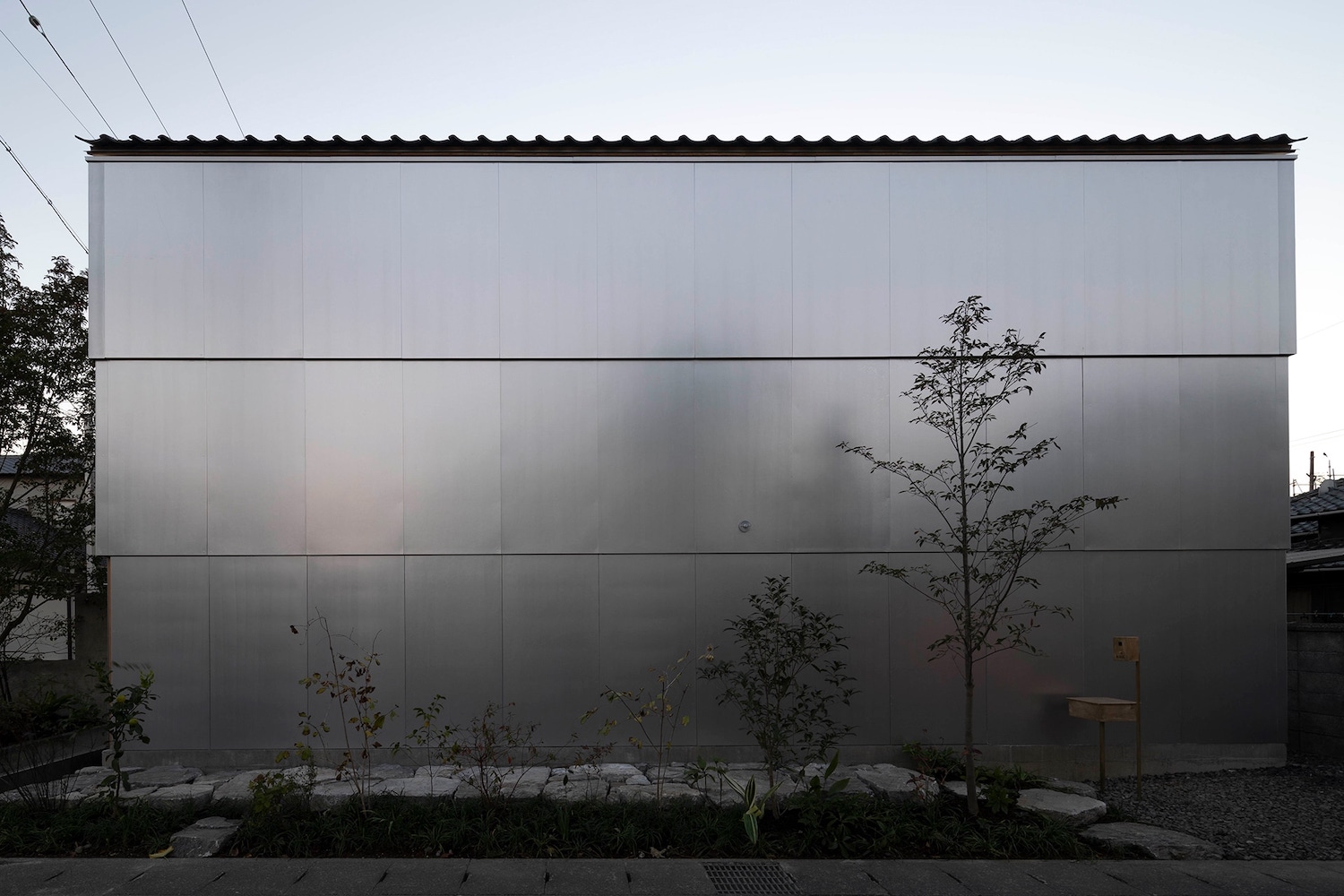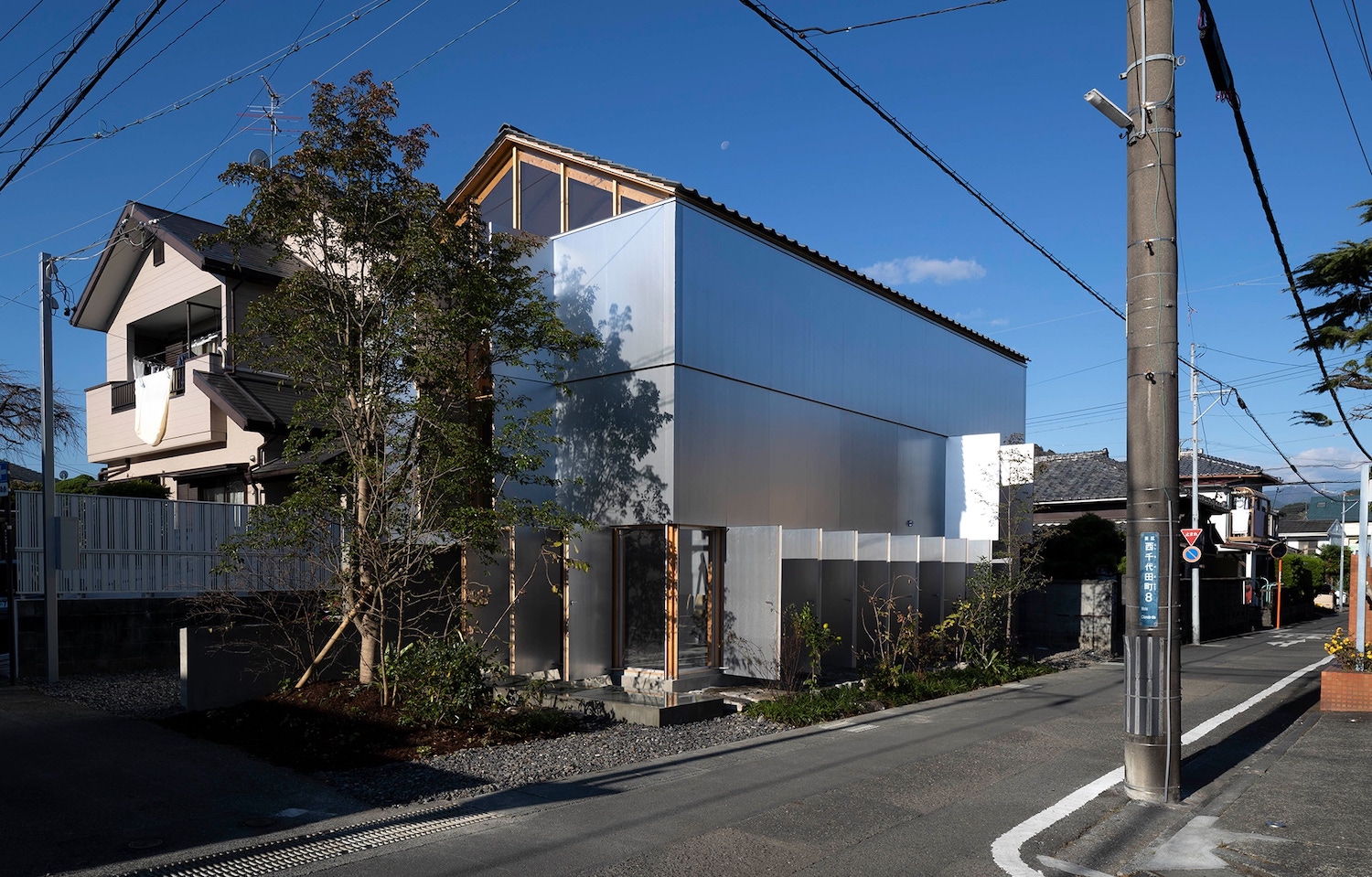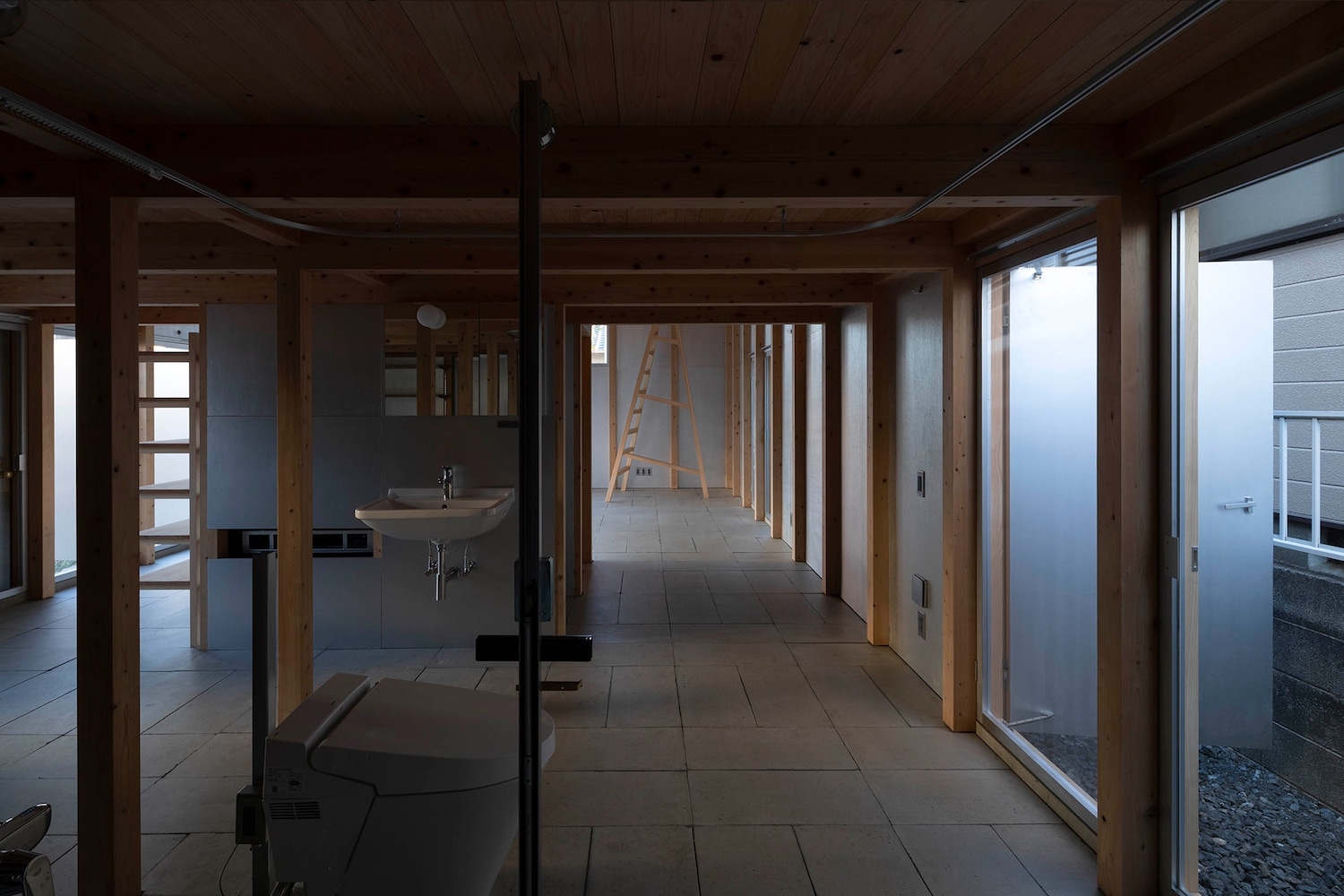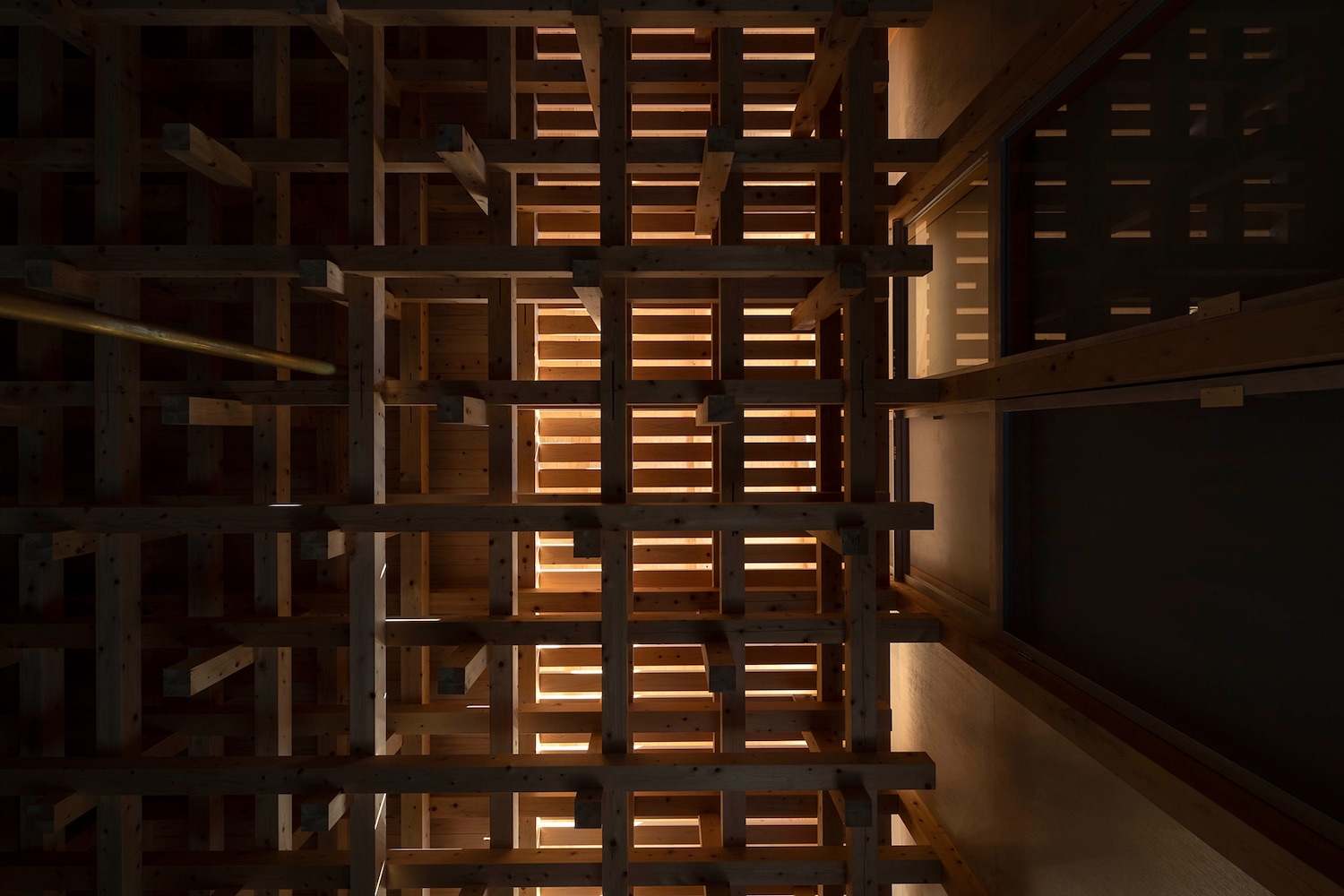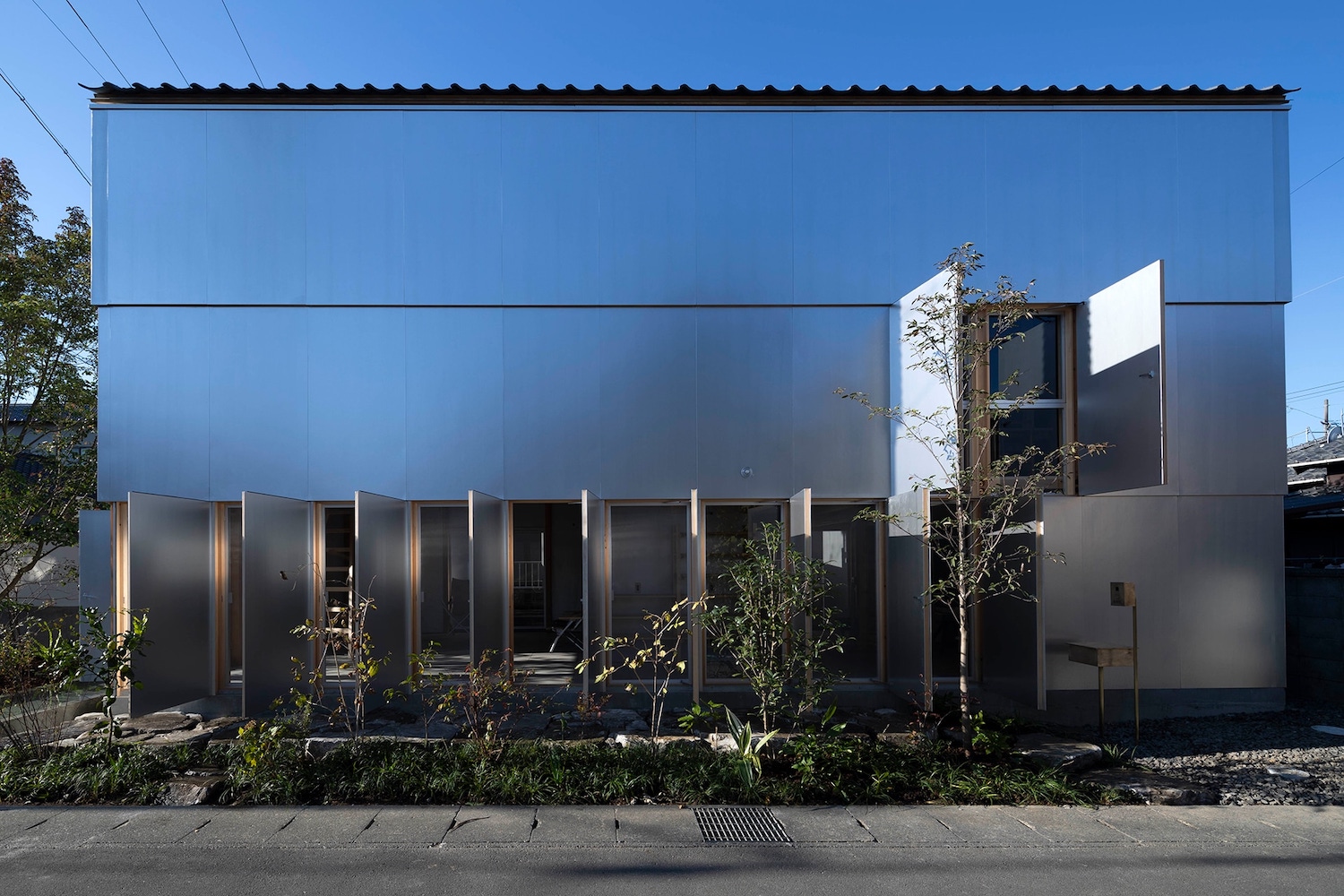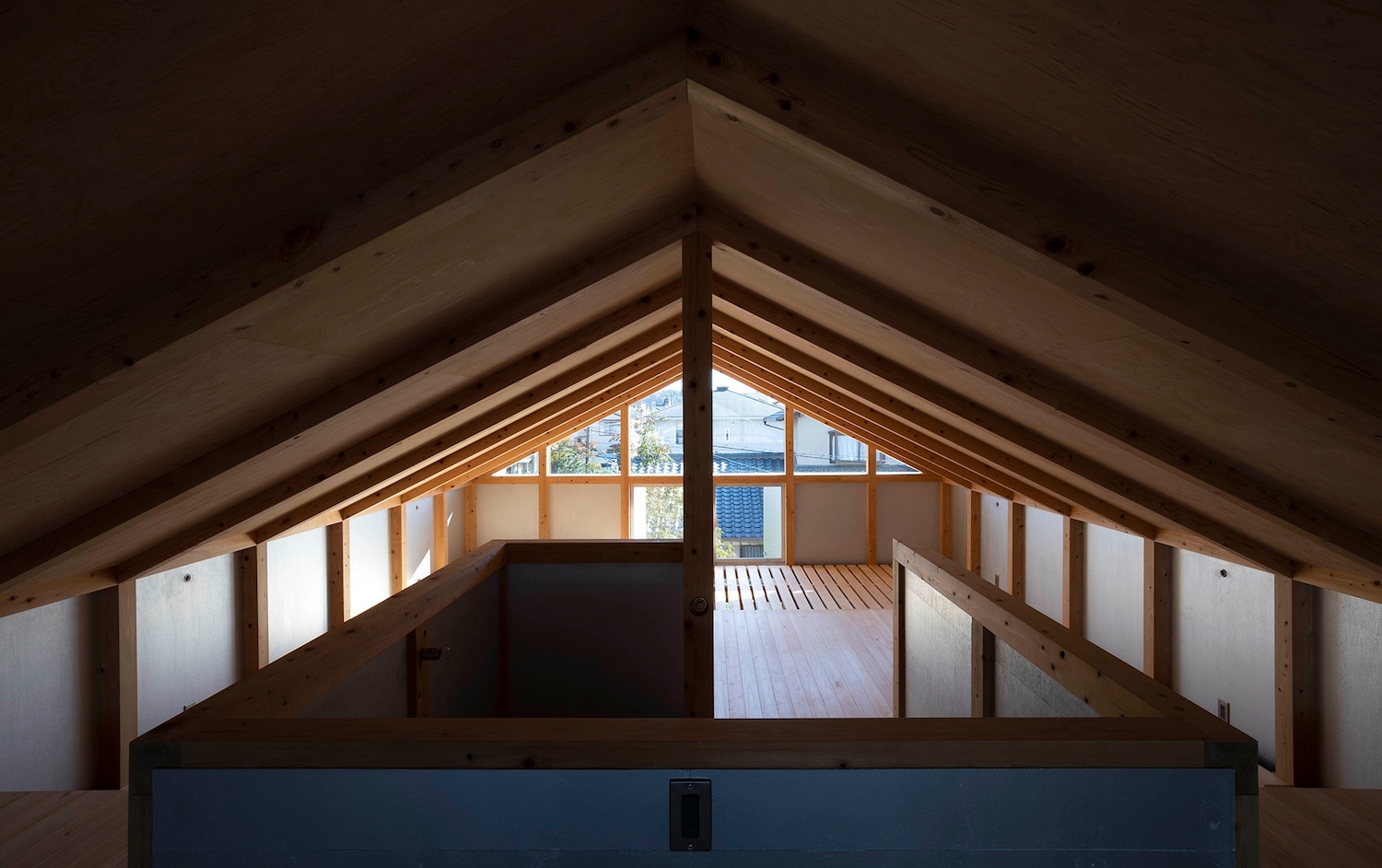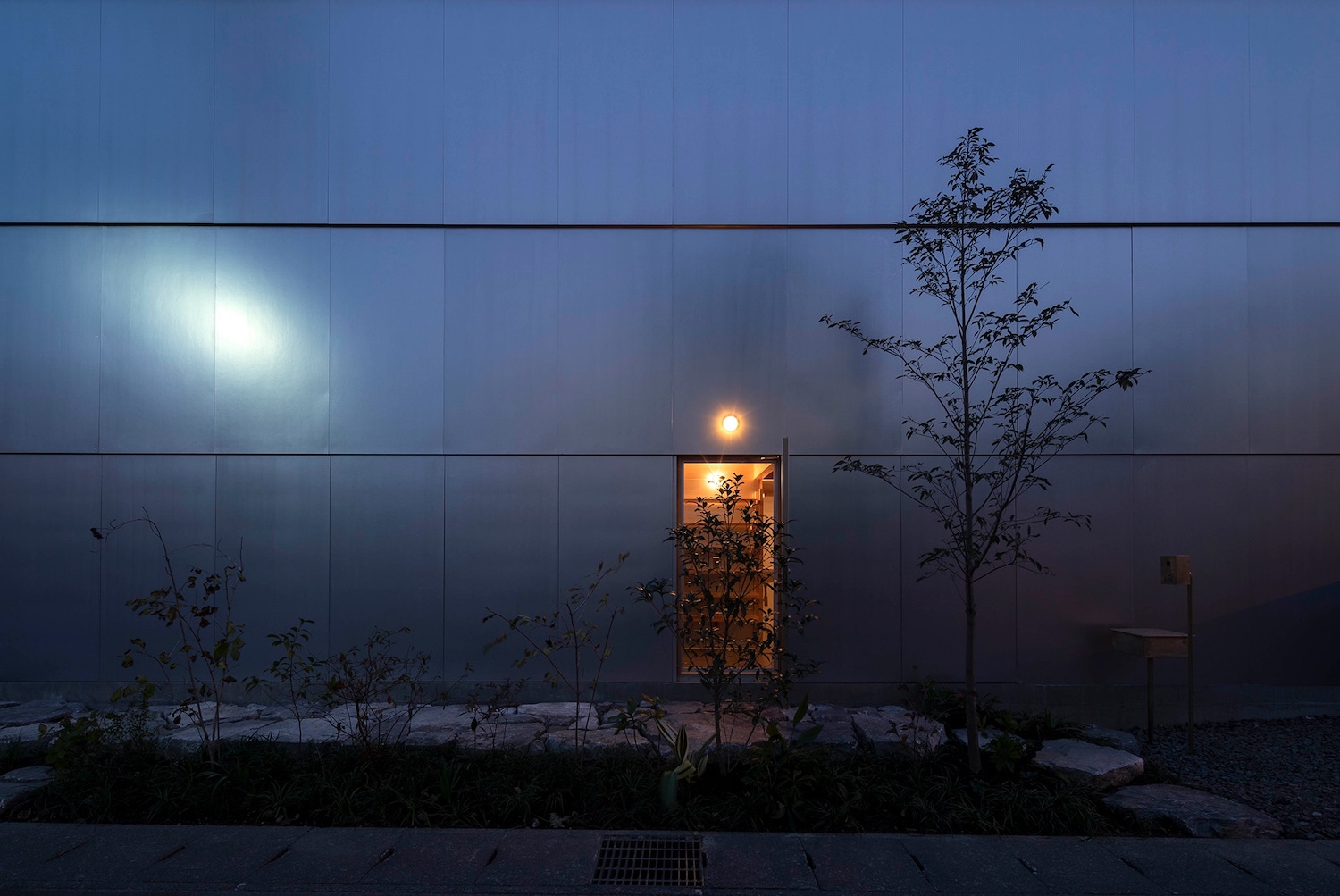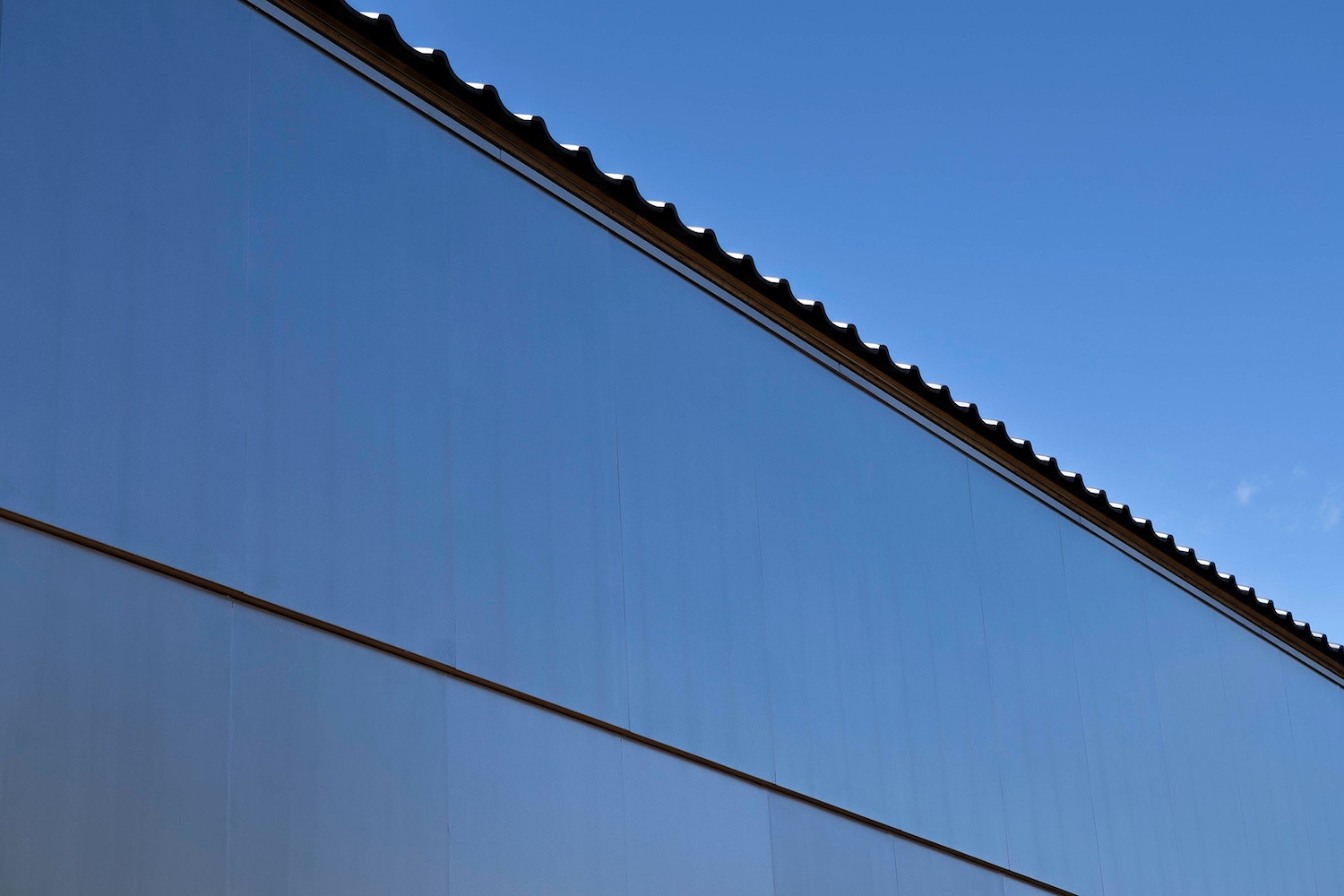House in Nishichiyoda-cho is a minimal residence located in Shizuoka, Japan, designed by Seiichi Yamada Architect & Associates. A stream that was used to transport materials during the construction of the castle flows nearby, and the fields where frogs croak remain. From the respect for traditional Japanese houses, the architects were trying to build a future Japanese house without falling into nostalgia by renewing the style and tradition with openness and depth as a starting point. Pillars are erected at a pitch of 900 mm on the outer peripheral surface of the 3 x 6 square and connected in the shape of a gable roof. Flat lattice beams assembled at a pitch of 1,800mm are stacked with a 900mm shift to the left and right to create a beam structure. All of the materials are made of 90mm square hinoki cypress materials for cost rationalization. In this way, four floors were created, including the dirt floor, in a one-room centered on the staircase, and the framework becomes a frame that floats inside the building like a cloud.
Three layers of vertical walls based on 3×6 boards play the roles of drains and windows, and stepped shadows create the contours of the exterior. When the wall is closed, the people passing in front, the swaying plants, and the water basin are reflected on the silver outer wall and stand out, blurring the existence of the house. Inside, the floors of each floor are vertically connected by a staircase, and a small amount of light passing through the framework illuminates the earthen floor. When one wall is opened, something like a dark hole appears on the outside, and a sharp ray of light enters inside. When all the walls are opened, the dirt floor continues to the city, and the light reflected on the water basin flickers on the upper structure. By opening and closing the wall, what can be seen from inside and outside changes. Through this repetition, this house, which symbolizes invisible things on the other side of the wall, is somewhat like a temple. Just as monks open and close fittings in the morning and evening, the realm changes.
Photography by Akinobu Kawabe
